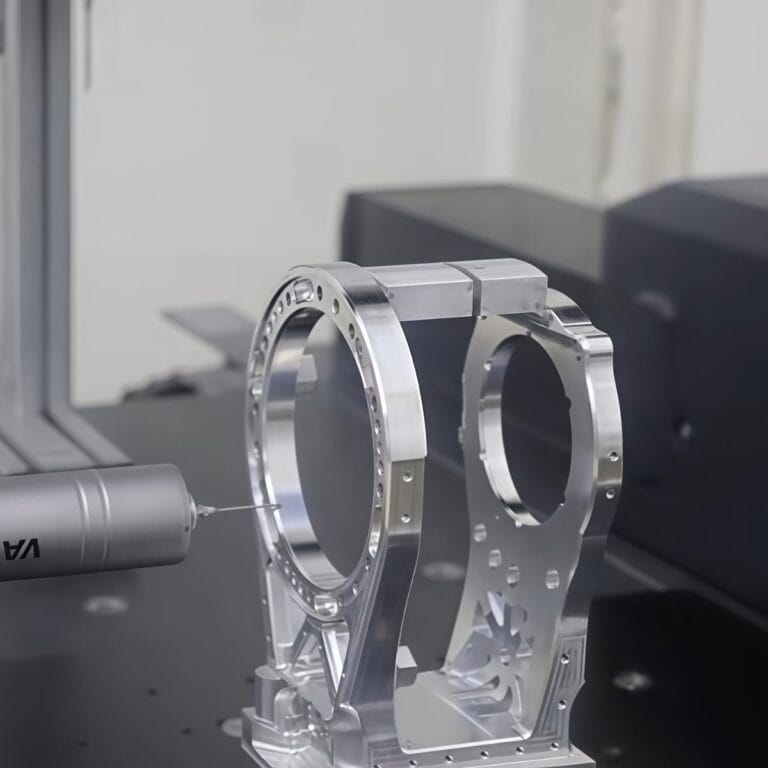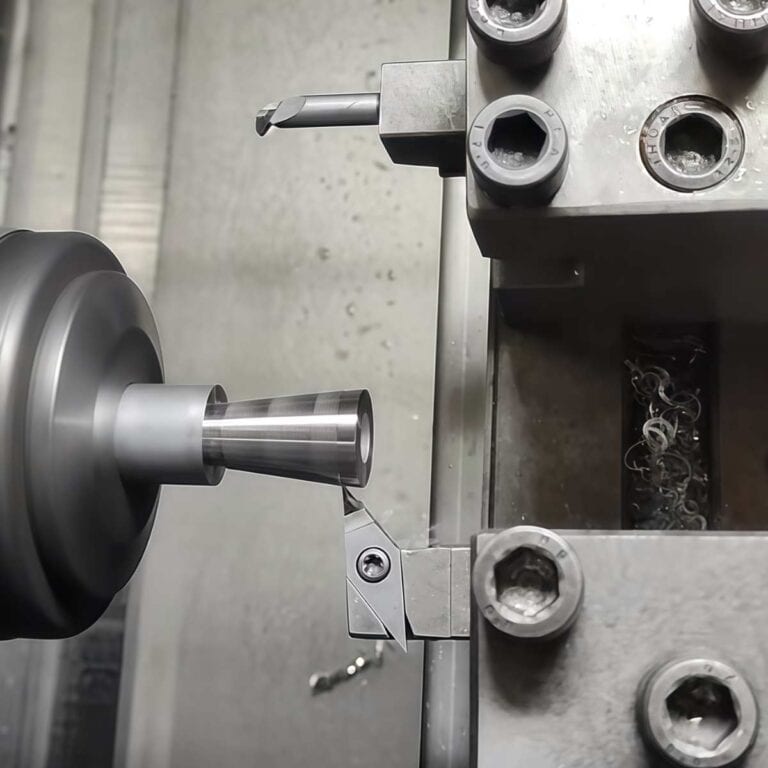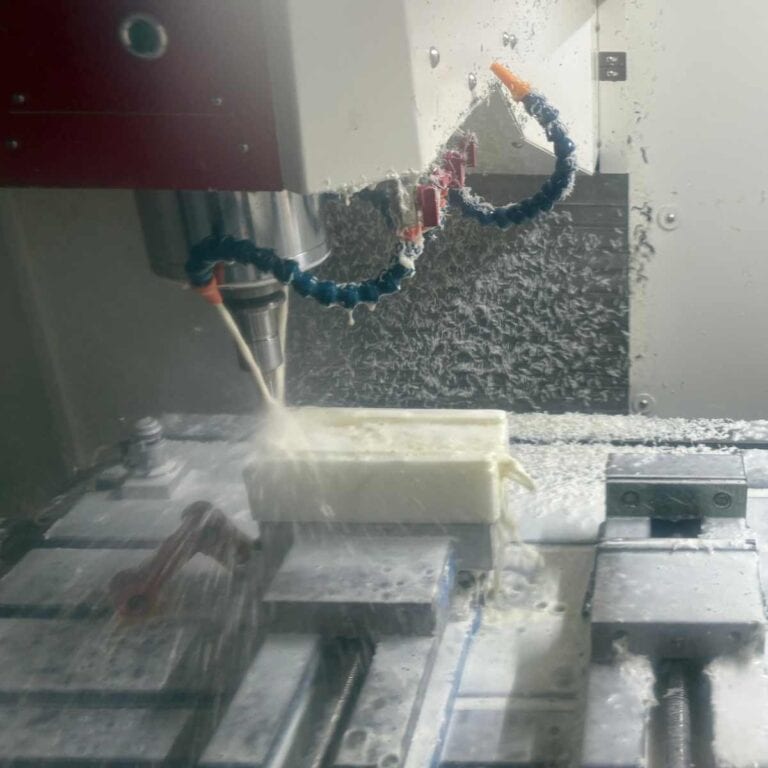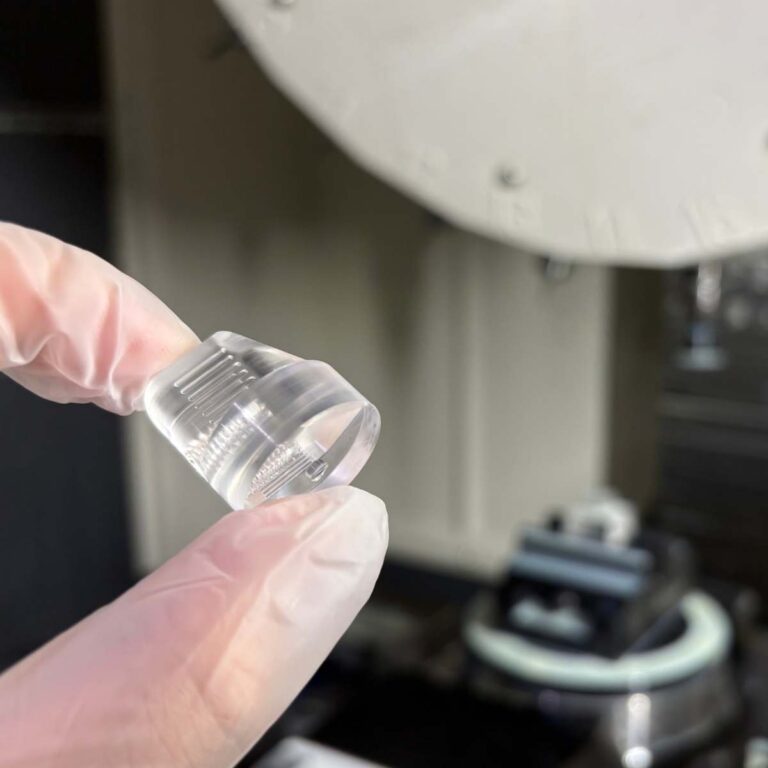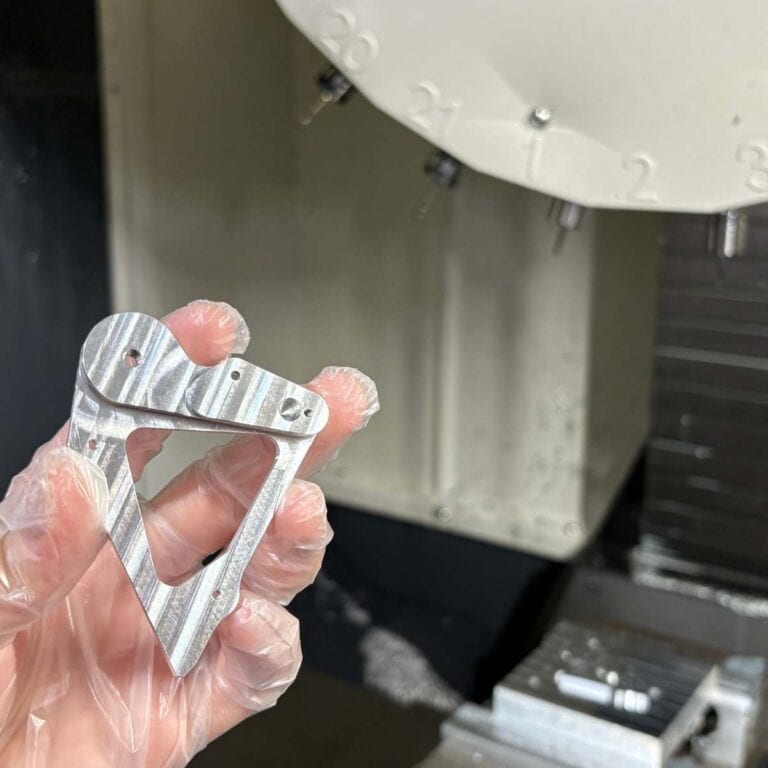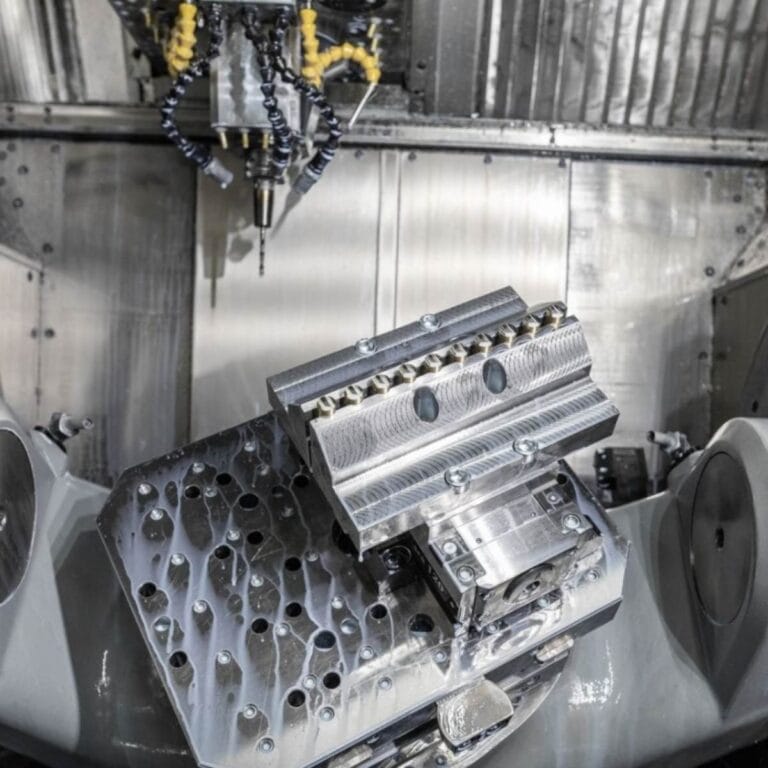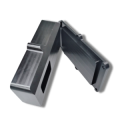Aluminum billet is a versatile and high-performance material widely used across various industries due to its high strength, durability, and excellent machinability. In this guide, we will dive deep into the world of aluminum billets. Let’s get started.
What is an Aluminum Billet
Aluminum billet is a foundational material produced through casting processes, where molten aluminum ingots are shaped into different forms, typically solid rods or blocks. It represents the initial stage of aluminum deep processing. After undergoing die-casting, extrusion, or rolling processes, it becomes a semi-finished product suitable for further manufacturing.
Key Processes in Aluminum Billet Manufacturing
Raw Material Selection: Based on application requirements, aluminum scrap or virgin aluminum is selected, considering factors such as cost, supply conditions, and required alloy composition to ensure material performance and processing adaptability.
Melting and Alloying: Virgin aluminum is melted in a high-temperature furnace at over 660°C (1220°F), with precise additions of alloying elements like magnesium and zinc to enhance the aluminum’s strength, corrosion resistance, and other critical properties, ensuring uniform alloy composition.
Forming Process
Casting: Molten aluminum is poured into steel molds and cooled under precise control, resulting in billets with consistent dimensions and uniform density.
Extrusion: Heated aluminum is forced through a die under high pressure to create products with complex cross-sections and precise shapes, meeting diverse needs.
Cooling and Solidification: Advanced techniques such as air cooling or water quenching are used to precisely control the cooling rate, prevent the formation of internal stresses, and ensure the aluminum billets possess excellent metallurgical properties and stable internal structures.
The Historical Background of Aluminum Billets
Aluminum billets originated in the 19th century as breakthroughs in aluminum refining technology allowed for their industrial application. In the early 20th century, aluminum billets were produced through forging and extrusion processes to meet the demands of the aviation and automotive industries. By the mid-20th century, new alloys like 6061 aluminum significantly enhanced billet performance. Entering the 21st century, aluminum billets began to see widespread applications.
Over the years, technological advancements have made aluminum billets easier to use and more versatile. Innovations such as CNC machining and computer-aided design (CAD) have opened up new possibilities. Progress in heat treatment and automation has propelled aluminum billets from basic industrial uses to applications in aerospace, automotive, and other advanced fields.
This evolution continues today, pushing the boundaries of what this extraordinary material can achieve.
Common Types of Aluminum Billets
| Aluminum Alloy Series | Characteristics | Can Be Made Into Billets? | Application Scenarios |
| 7000 Aluminum Alloys (e.g., 7075, 7050) | Zinc is the primary alloying element, offering high strength and excellent fatigue resistance. | Yes, commonly used for high-strength billets, especially suited for aerospace, military, and high-performance automotive applications. | For ultra-high-strength structural components; corrosion resistance is slightly inferior and requires post-treatment improvement. |
| 6000 Aluminum Alloys (e.g., 6061, 6063, 6082, 6005/6005A) | Magnesium and silicon are the main alloying elements, providing excellent strength-to-weight ratio, weldability, and good surface finish. | Yes, a well-balanced, multi-purpose billet material. | Widely used in aerospace, construction frameworks, heavy-duty structures, and extrusions, ideal for applications requiring strength, corrosion resistance, and balanced performance. |
| 5000 Aluminum Alloys (e.g., 5052, 5083) | Magnesium is the primary alloying element, offering excellent corrosion resistance and moderate strength. | Yes, suitable for corrosion-resistant billets, especially in marine, transportation, and storage tank fields. | For environments requiring resistance to salt spray and humidity, such as ships and tanks, where strength demands are relatively low. |
| 3000 Aluminum Alloys (e.g., 3003, 3105) | Manganese is the primary alloying element, providing good corrosion resistance but lower strength. | Yes, suitable for lightweight and corrosion-resistant billets. | For food and chemical storage tanks, roofing materials, and other applications that require good corrosion resistance but not high strength. |
| 2000 Aluminum Alloys (e.g., 2024, 2011) | Copper is the primary alloying element, offering high strength but poorer corrosion resistance and good heat resistance. | Yes, suitable for high-strength billets, commonly used in aerospace and military equipment. | For applications requiring high strength and heat stability but lower corrosion resistance, such as aircraft frames and military structural components. |
| Pure Aluminum Billets | High corrosion resistance, high chemical purity (99% or higher), and excellent conductivity. | Yes, commonly used for billets requiring conductivity and corrosion resistance. | For electrical components and industrial parts requiring high corrosion resistance, such as wires and power equipment casings. |
Main Applications of Aluminum Billets
Aluminum billets have become the preferred material for industries such as aerospace, automobile, and robotics manufacturing due to their high strength, light weight, and good processability.
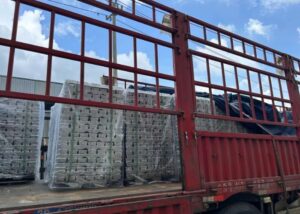
- CNC Machining: Aluminum billets are the primary raw material for CNC-machined parts, capable of being precisely cut into complex geometries.
- Mold Manufacturing: Aluminum billets can be used to produce injection molds and die-casting molds, offering good thermal conductivity and machinability.
- Construction Structures: Used to manufacture lightweight materials such as window frames and support structures.
- Electronics Industry: Utilized in the production of heat sinks, casings, and other components requiring good thermal conductivity.
- Transportation:Used for making airplane parts, automobile components, and ship structures.
Market Trends of Aluminum Billets
The aluminum billet market is showing a growth trend with rising global demand. According to a report by MarketsandMarkets, the market is expected to reach $23 billion by 2025, with a compound annual growth rate of 4.5%.
The price of aluminum billets fluctuates based on global demand, raw material costs, and economic conditions. For example, increased demand in the automotive industry may drive up prices.
Staying informed can help you effectively budget and plan future projects. Reviewing recent industry reports or market analyses can provide valuable insights.
Does Aluminum Billet Production Impact the Environment
Aluminum billet production has no significant impact on the environment. While the production process consumes a substantial amount of energy, recycling aluminum can save up to 95% of the energy required to produce primary aluminum, making aluminum billets relatively environmentally friendly.
Due to the high recyclability and sustainability of aluminum materials, aluminum billets are considered an environmentally responsible choice. As environmental awareness increases, the production of aluminum billets demonstrates greater potential for resource efficiency and waste management.
Aluminum Billets vs. Aluminum Ingots Comparison Table
| Dimension | Aluminum Billets | Aluminum Ingots |
| Shape and Size | – Typically cylindrical in shape with flexible length and diameter, customizable to specific needs, often used for high-precision machining. | – Usually standardized rectangular or trapezoidal blocks, fixed in size, convenient for storage and transportation, suitable for smelting and large-scale processing. |
| Production Process | – Manufactured through continuous casting or extrusion processes, ensuring uniform grain structure and mechanical properties, suitable for high-demand applications. | – Made through traditional direct chill casting or horizontal continuous casting, simpler processes with high production efficiency. |
| Strength and Performance | – Features uniform grain structure with excellent strength and fatigue resistance; tensile strength can reach up to 572 MPa (e.g., 7075 alloy). | – Lower strength, suitable for further processing to enhance performance; as a primary material, tensile strength is usually below 250 MPa. |
| Machinability | – Designed for high-precision machining, suitable for CNC cutting, extrusion, forging, and other complex processes, with precision up to ±0.005 mm. | – Used for basic processing methods such as smelting, casting, and rolling, can be shaped into various forms to meet diverse requirements. |
| Cost | – Higher cost due to complex production processes and superior performance, ideal for high-value-added fields. | – Lower cost with shorter production cycles, suitable for large-scale, low-cost manufacturing needs. |
Comparison of Aluminum Billets with Other Materials
| Dimension | Aluminum Billets vs Forged Steel | Aluminum Billets vs Steel | Aluminum Billets vs Plastic Components | Aluminum Billets vs Carbon Fiber |
| Weight | Aluminum billets are lighter (density ~2.7 g/cm³), helping reduce weight and improve efficiency. | Aluminum billets are lighter (steel density ~7.85 g/cm³), suitable for lightweight applications. | Aluminum billets are heavier but provide greater stability and performance. | Carbon fiber is lighter (density ~1.6 g/cm³) but significantly more expensive. |
| Corrosion Resistance | Aluminum billets have superior corrosion resistance, do not rust, and are ideal for marine and outdoor applications. | Aluminum billets are more corrosion-resistant; steel requires additional surface treatments (e.g., galvanizing) for durability. | Aluminum billets offer better corrosion resistance; plastic may degrade due to aging, UV, or chemicals. | Aluminum billets have better corrosion resistance than untreated carbon fiber, but treated carbon fiber performs excellently in corrosive environments. |
| Machinability | Aluminum billets are easier to machine, suitable for CNC cutting and manufacturing complex geometries. | Aluminum billets are easier to machine, especially for high-precision requirements, while steel typically requires more energy and complex tools. | Aluminum billets offer higher machinability, ideal for complex parts, while plastic has more limitations. | Aluminum billets have strong machinability for various manufacturing processes, while carbon fiber requires special molds and complex procedures. |
| Cost | Aluminum billets cost less than forged steel but deliver long-term performance, reducing maintenance costs. | Aluminum billets are slightly more expensive but offer better value in terms of lightweight and durability; steel may incur higher maintenance expenses. | Aluminum billets are more costly but provide stronger mechanical properties, while plastic is cheaper but has a shorter lifespan. | Aluminum billets are significantly cheaper than carbon fiber; carbon fiber’s manufacturing costs are higher, suitable for premium applications. |
Why Are Aluminum Billets More Expensive
The higher cost of aluminum billets is primarily due to the complex refining process, high energy consumption, high purity and performance requirements, longer production cycles, and raw material prices being significantly influenced by market supply and demand.
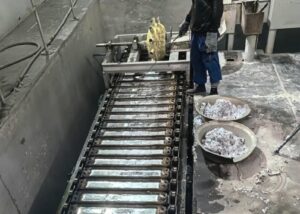
Below is a detailed analysis of why aluminum billets have higher manufacturing costs:
- Production Cycle: Aluminum billets require a longer production cycle (7–14 days) to ensure high precision and strength, whereas traditional aluminum materials have a shorter production cycle (3–7 days).
- High Precision: Aluminum billets have dimensional tolerances of ±0.5mm and surface finish reaching Ra3.2 µm, which significantly increases processing difficulty.
- Material Selection: Aluminum billets are made from high-purity aluminum alloys with superior strength and performance. For example, the tensile strength of 6061 aluminum alloy is approximately 310 MPa, compared to less than 250 MPa for standard aluminum materials.
In conclusion, aluminum billets’ higher costs are attributed to their precision manufacturing processes, high-quality materials, and additional processing steps. Their advantages lie in performance and durability, making them ideal for applications with stringent requirements for strength, corrosion resistance, and precision. These factors are precisely what make their cost higher than traditional aluminum materials.
The Future of Aluminum Billets in Manufacturing
The future of aluminum billets in manufacturing will continue to see growth. Advancements in artificial intelligence and nanotechnology are expected to revolutionize aluminum billets, particularly in aerospace, automotive, and other sustainable fields.
According to forecasts by Grand View Research, the aluminum billet market is projected to reach $28 billion by 2027, with an annual growth rate of 5.2%. The rising demand for electric vehicles and lightweight materials will further expand aluminum billets’ applications.
As electric vehicles and aerospace innovations rise, the demand for aluminum billets will remain strong, driving further technological breakthroughs.
FAQs
How strong is 6061 aluminum billet?
6061 aluminum billet strikes a good balance between strength, weldability, and corrosion resistance, with a tensile strength of approximately 290 MPa, making it suitable for applications requiring moderate strength.
Can aluminum billets bend?
Compared to traditional aluminum materials, aluminum billets have higher strength and uniformity, making them less prone to bending under the same conditions. However, the bendability of aluminum billets still depends on their alloy composition, thickness, and processing methods. Overall, the bending performance of aluminum billets varies based on specific alloys and usage environments.
Can aluminum billets be welded?
Not all aluminum billets can be welded. Alloys like 3003, 5052, and 6061 are weldable, but 7075 aluminum is not suitable for welding.
What is the strongest aluminum billet?
7075 and similar alloys are among the strongest aluminum billets, which is why they are commonly referred to as aerospace-grade aluminum.
What is the difference between aluminum billets and regular aluminum?
Compared to regular aluminum, aluminum billets offer higher strength and uniformity. They typically have greater tensile strength (e.g., 7075 aluminum billets can reach up to 572 MPa), better machining precision, and superior surface quality. Regular aluminum, on the other hand, is more flexible, lower in cost, and better suited for general-purpose applications.
Does Aluminum Billet Rust?
Aluminum billets do not rust because their surface naturally forms a very thin aluminum oxide layer. Under normal conditions, this layer effectively prevents further corrosion of the aluminum.
Conclusion
After exploring aluminum billets in depth, have you gained a better understanding of their capabilities? If your project has not yet identified a more suitable material, consider using aluminum billets. We have extensive experience in processing aluminum billets and would be delighted to share more insights with you.

